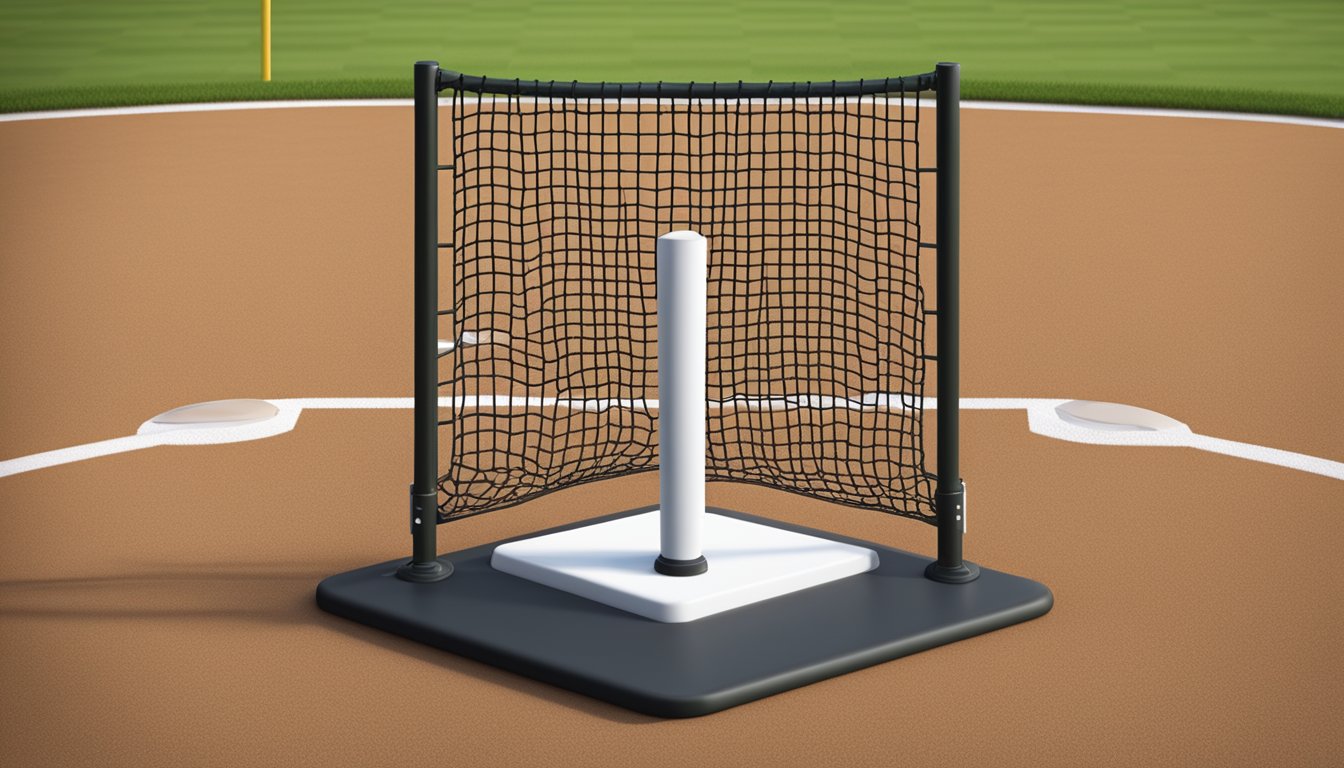In the landscape of baseball player development, the role of consistent batting tee practice is often understated. While the spectacle of game day showcases players hitting live pitches, the foundation of a great hitter is frequently built off the field with a humble piece of equipment: the batting tee. The effectiveness of this tool is not just in its simplicity, but in the quality of repetition it allows, enabling players to hone their swing through focused practice.
Batting tee practice allows players to isolate and work on specific aspects of their hitting mechanics without the variability of pitch type, speed, or location. This focused approach on technique facilitates a structured environment for skill improvement and muscle memory development. By breaking down the swing into its component parts, players can make incremental adjustments, which can translate to improved performance during live games.
Integration of tee work within a player’s training routine is crucial for continued development. It is not only about the quantity of the practice but also about employing the right methods and equipment to ensure productive sessions. Consistent, targeted practice on the tee can establish a solid foundation for a hitter’s approach at the plate, building confidence and reinforcing a growth mindset that recognizes the value of dedicated practice.
Key Takeaways
- Repetition with a batting tee solidifies hitting mechanics and muscle memory.
- Tee practice isolates and improves specific technical aspects of a player’s swing.
- Strategic integration of tee work into training regimens enhances overall player development in baseball.
Benefits of Batting Tee Practice
https://www.youtube.com/watch?v=nDZImvVFHvg&embed=true
Batting tee practice is a foundational training aid for baseball players aimed at refining individual aspects of their swing. This methodical approach allows hitters to isolate components of their batting, resulting in marked improvements in their overall performance.
Improving Swing Mechanics
Swing mechanics are crucial for a successful baseball swing, and tee work provides a controlled environment to work on them. Players can focus on specific parts of their swing, such as the stance, load, stride, and follow-through. Coaches can observe and correct a batter’s form, helping to build a more efficient and powerful swing.
Enhancing Timing and Rhythm
A batter’s timing and rhythm are developed through repetitive tee work. This drill allows hitters to work at their own pace, gradually increasing the speed of their swings to simulate different pitch speeds. Adjusting the height and location of the tee can also help batters prepare for a variety of pitch types.
Developing Hand-Eye Coordination
Hand-eye coordination is essential for making consistent contact with the ball. Batting practice using a tee helps hitters improve their ability to track the ball onto the bat, which in turn can lead to an increase in contact rate and hitting accuracy.
Achieving Consistency in Hitting
Consistency in hitting is a hallmark of any great hitter. Through tee work, players can repetitively practice their swing, leading to muscle memory development. This steadiness helps batters maintain a uniform swing during games, increasing their chances of successful contact with various pitches.
Technical Aspects of Tee Work
https://www.youtube.com/watch?v=M1DAzCUcX4o&embed=true
Regular batting tee practice plays a crucial role in honing a player’s technique, fostering consistency, and improving accuracy. It is a controlled environment that allows players to isolate and work on specific aspects of their swing.
Understanding the Strike Zone
The strike zone is a critical concept for hitters to master, serving as the target area where a batter aims to make contact. Drills focused on tee work develop a hitter’s visual perception and motor control. They can practice identifying pitches within the strike zone using different tee heights and positions:
- High Tee: Mimics high pitches for upper strike zone.
- Middle Tee: Represents pitches at mid-torso level.
- Low Tee: Helps with low strikes at knee level.
Adjusting to Pitch Locations
Mastering the art of hitting pitches across different locations is vital for a successful batter. Tee work allows players to simulate and adjust their swing for outside and inside pitches. Using a batting tee, players can position the ball:
- In line with the front hip for inside pitches; promotes quick hands and the ability to pull the ball.
- Opposite the back foot for outside pitches; encourages driving the ball to the opposite field.
Simulating Different Pitch Types
While a batting tee cannot replicate the dynamics of live pitching, it can simulate various pitch types, aiding in the adjustment to different ball movements:
- Straight placement: Replicates the trajectory of a fastball.
- Angled placement: Helps batters prepare for curveballs and off-speed pitches.
When training against simulated off-speed pitches, batters develop the timing and patience needed to handle them in real game situations.
Integrating Tee Practice in Training Regimens
https://www.youtube.com/watch?v=pzvT71bYw8A&embed=true
Integrating batting tee practice into training regimens is essential for player development at all levels, from youth baseball to high school. It offers a controlled environment to refine swing mechanics and build muscle memory.
Setting Up Practice Routines
Coaches can establish a routine that players follow during training sessions. It is critical to determine the frequency and duration of tee practice to yield optimal results. For example:
| Age Group | Frequency | Duration |
|---|---|---|
| Youth Baseball | 3 times/week | 15-20 minutes |
| High School | 5 times/week | 20-30 minutes |
Each session should consist of a series of drills focusing on different aspects of batting, such as hitting to opposite fields or correcting swing path. The repetition of these drills encourages consistency and muscle memory development.
Utilizing Tee Drills for Warm-Ups
Incorporating batting tee drills into warm-up routines ensures that players engage their muscles and refine their swing before facing live pitching. Players should start with simple contact drills to build their feel for the bat and ball. Progressing to more complex drills, like inside/outside pitches and varying swing angles, prepares players for the diversity of pitches they’ll face during games.
Incorporating Live Pitch Scenarios
To translate tee practice skills to competing against live pitching, coaches can simulate match scenarios. This could include setting up the tee to mimic different pitch locations and incorporating soft toss exercises to adjust the player’s timing. Rotating between the batting tee and live pitch scenarios bridges the gap between practice and actual game situations, enabling players to apply their skills confidently.
By methodically integrating tee practice in training regimens, coaches can significantly contribute to the skill growth and game-readiness of baseball players.
Measuring Progress and Providing Feedback
Regular batting tee practice is essential for skill enhancement. Coaches and players can track developmental progress and make informed adjustments by analyzing performance and integrating technology for feedback.
Analyzing Batting Tee Performance
Batting tee practice allows players to focus on hitting the ball’s sweet spot, crucial for effective batting. Coaches observe and note the consistency of the player’s swing, contact accuracy, and power. They look into biomechanical aspects, noting any deviations that could impact performance. Feedback from these sessions is pivotal for player development.
- Key Performance Indicators (KPIs):
- Contact accuracy
- Swing consistency
- Power generated
Analysis of these KPIs enables coaches to identify areas needing improvement, guiding players through targeted adjustments. Scientific research supports the use of repetitive practice to build muscle memory, which is essential for refining batting skills.
Using Technology for Enhanced Feedback
Advancements in technology connect players and coaches to a more detailed analysis of batting performance. Equipment within a batting cage can include high-speed cameras and sensors to gather data on swing mechanics and ball impact.
Technological Tools and Their Uses:
| Tool | Use |
|---|---|
| High-speed cameras | Capture swing mechanics |
| Sensors | Measure bat speed and contact point with ball |
| Biomechanical software | Analyze swing and provide biomechanical feedback |
Utilizing these technologies can convey complex biomechanical data into understandable feedback for both player and coach. This data-driven approach can lead to precise adjustments and improved understanding of how to optimize each swing. The use of technological tools assures a more scientific and objective analysis of player development.
Choosing the Right Equipment
The quality and suitability of equipment are crucial in maximizing the benefits of batting tee practice for player development.
Selecting Appropriate Batting Tees
When selecting a batting tee, durability and adjustability should be top considerations. Tanner Tees, for instance, are a popular choice among players due to their robust construction and the ability to easily adjust to different heights, catering to various age groups and strike zone preferences. A player should look for a tee that has a solid base to mimic the stability of home plate without toppling over during training.
Understanding Bat and Ball Types
The bat and ball used in conjunction should complement the training aid. For batting practice, it is essential to use the same type of ball that players would encounter in a game situation. As for bats, they should be of comparable weight and length to what a player would typically use in a game. It is advisable to avoid heavier bats for tee practice, as it could alter swing mechanics.
| Bat Type | Use Case | Ball Type | Use Case |
|---|---|---|---|
| Aluminum Bat | Common for practice; durable | Baseball | Standard game ball |
| Composite Bat | Good for match-simulation | Softball | For softball players |
| Wood Bat | Mimics game conditions for pros | Safety Balls | Reduced injury risk for learners |
In batting practice, the equipment used should simulate game-like conditions to foster skill transfer from practice to competitive play.
Cultivating a Growth Mindset
https://www.youtube.com/watch?v=X1ysN85hIy0&embed=true
Regular batting tee practice is a foundational tool for a player’s skill advancement, underscoring the value of a growth mindset in baseball. It encourages players to view effort as a path to mastery.
Emphasizing Persistence and Practice
Players often hear that success is a byproduct of persistence and consistent practice. Through repetitive batting tee exercises, they learn the importance of dedication. Each swing builds not only muscle memory but also psychological resilience.
- Routine: Players should establish a consistent practice schedule.
- Goals: Setting incremental objectives helps in measuring progress.
A coach plays a crucial role in fostering a mindset wherein players commit to regular practice as an integral part of their development.
Learning from Hitting Challenges
Adjustment is a critical aspect of player growth. When faced with hitting challenges, the ability to analyze and learn from errors is invaluable.
-
Feedback Analysis: Players need to review each session’s outcome and understand what adjustments are necessary.
-
Hitting Metrics: Use of technology can provide objective data to guide improvements.
The batting tee, therefore, becomes an instrument for both technical refinement and mental conditioning as players build their careers.
Conclusion
https://www.youtube.com/watch?v=fBNIsIOkSlI&embed=true
Regular practice with a batting tee has proven to be an effective training aid in the development of baseball players. It allows for consistent repetition, leading to improved muscle memory and batting skills. On the diamond, this can translate to greater success at the plate.
- Increased Precision: Using a batting tee helps batters refine their swing mechanics, promoting precision and power.
- Flexibility in Training: Players have the flexibility to practice independently and focus on specific weaknesses.
- Muscle Strength: Repetitive use enhances muscle strength and bat speed, critical for hitting success.
In essence, a batting tee is a fundamental tool for players committed to elevating their game. Its role in ongoing skill enhancement should not be underestimated.
Frequently Asked Questions
https://www.youtube.com/watch?v=gQ_LRlAD__c&embed=true
The regular use of a batting tee allows players to refine their swing mechanics and consistency. This section answers common inquiries into how tees influence player development.
How can regular batting tee practice contribute to a baseball player’s hitting technique?
Regular batting tee practice allows baseball players to isolate and work on specific parts of their swing. By repetitively targeting individual mechanics, players can develop muscle memory for more consistent and accurate hitting.
What kind of drills can be incorporated into a batting tee program for college baseball players?
College baseball players can introduce varied drills such as inside pitch, outside pitch, and low ball drills on a batting tee. These exercises help players adjust their swing to different pitch locations and enhance their ability to make solid contact with the ball.
In what ways do professional MLB players benefit from using batting tees during practice?
Professional MLB players use batting tees to maintain their swing technique and to fine-tune their bat path. Even at the professional level, focusing on fundamental skills with a tee can yield noticeable improvements in hitting performance.
How does the high tee drill specifically aim to improve a player’s hitting abilities?
The high tee drill encourages players to keep their swing path level and to hit the upper half of the baseball, training them to make contact with high pitches effectively and to potentially drive the ball with more power.
What are effective batting cage drills that can complement batting tee exercises?
Effective batting cage drills that work well with tee exercises include soft toss drills, front toss, and live batting practice. These drills further a player’s ability to time their swing and hit a moving target after honing their mechanics on the tee.
Can young players in programs like Driveline improve their batting average with tee practice, and how?
Young players in advanced programs like Driveline can improve their batting average through tee practice by increasing swing accuracy and developing a more efficient bat path. Integrating tee practice with data-driven feedback can accelerate a player’s development.










